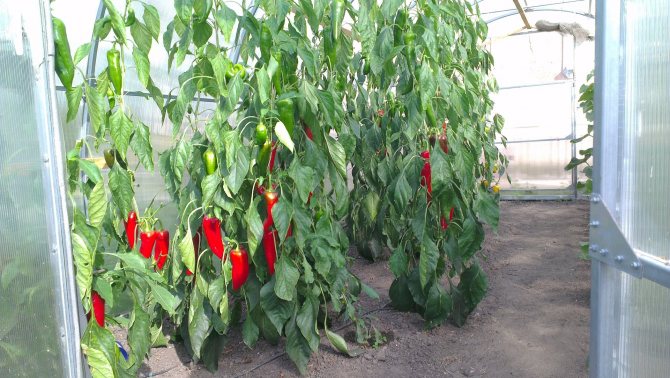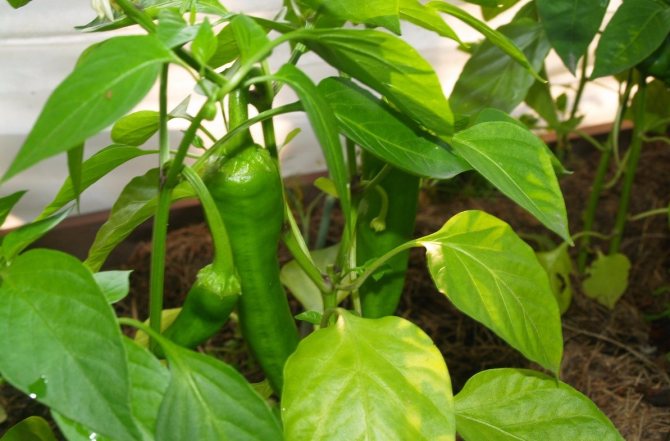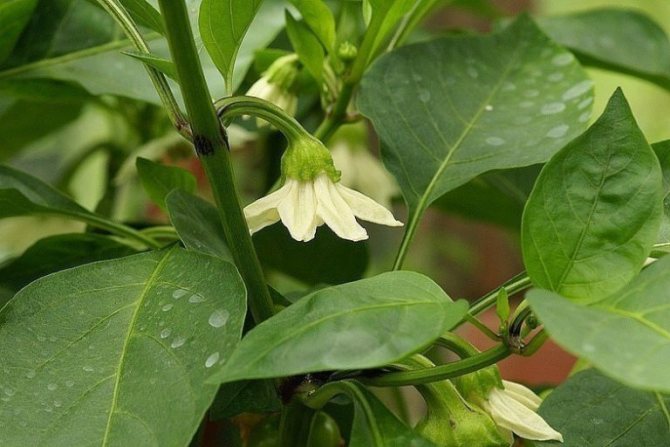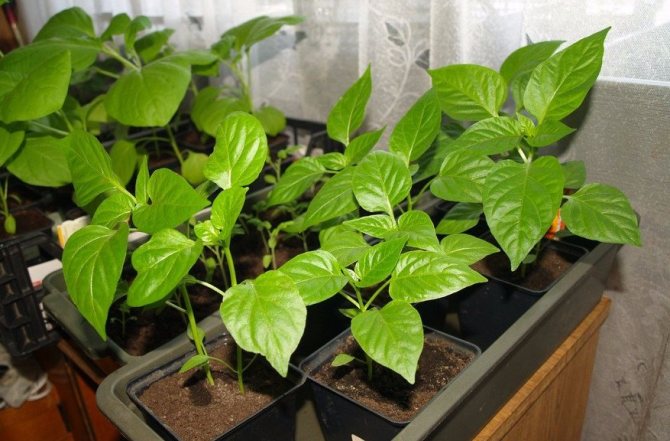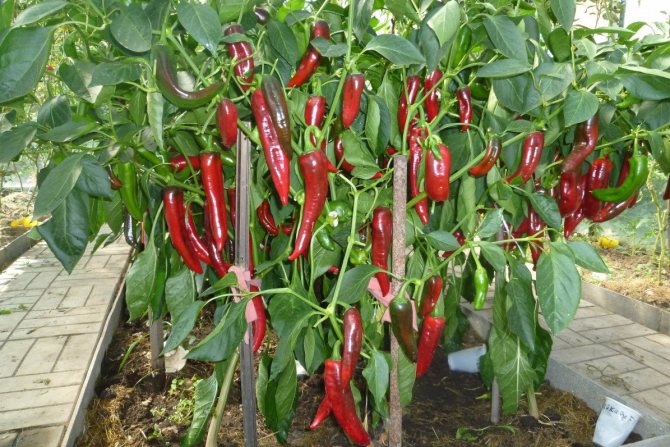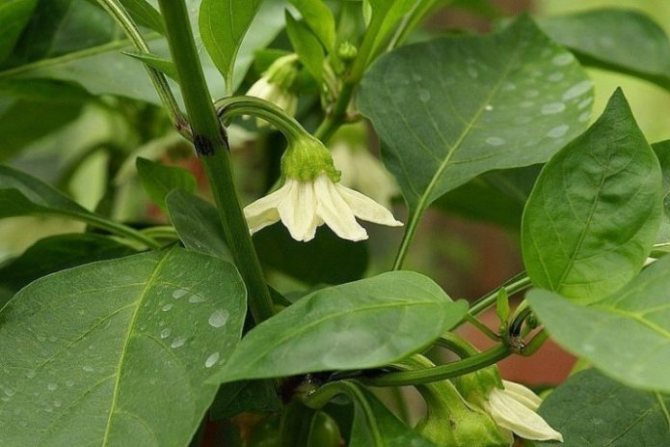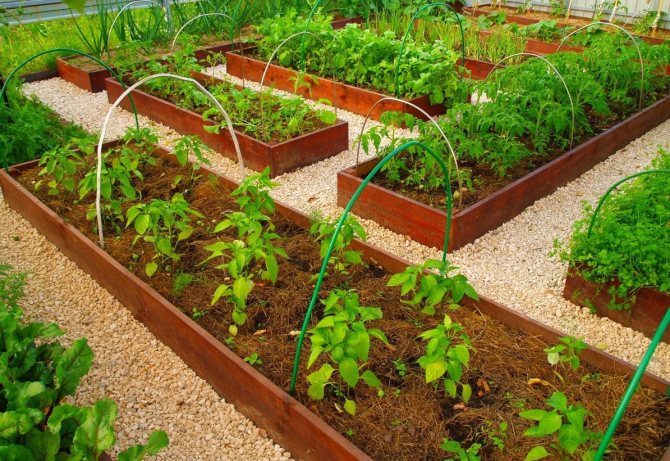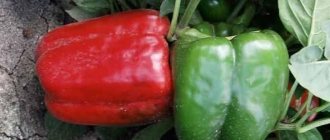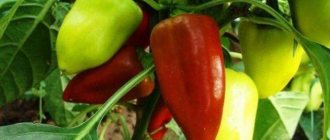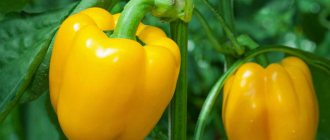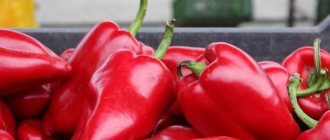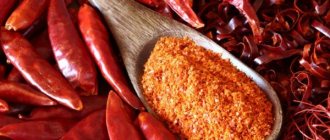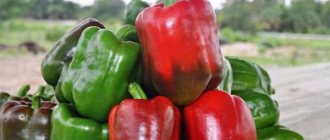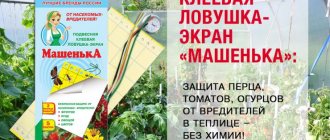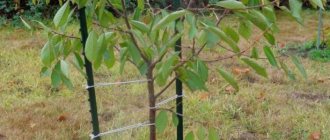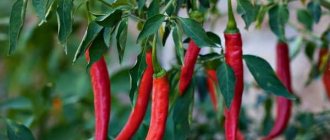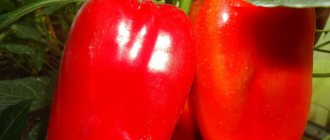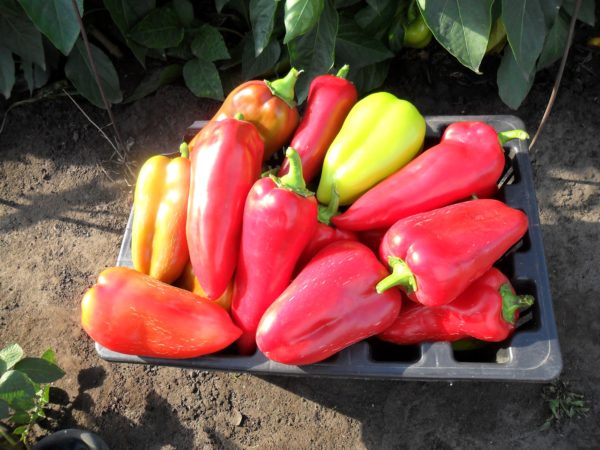
Pepper Kakadu comes from Bulgaria. He attracts his fans mainly with taste and useful properties. However, in order to grow this variety at home, many factors must be taken into account, since this plant is quite finicky. For this reason, Kakadu pepper lovers choose this particular species, as it is able to cope with the weather conditions of the area in which they are going to grow it. Gardeners want to simultaneously combine the unpretentiousness of the plant and its yield, which they currently successfully manage.
For this reason, Cockatoo is the most widespread and popular variety grown by pepper lovers in our country. Due to its characteristics, including the uniqueness of its chemical composition, it is considered one of the healthiest peppers.
Description
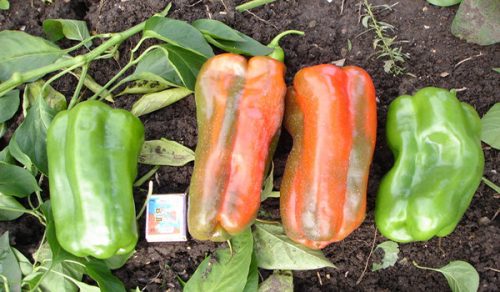

The yield of the variety is approximately 2.5 kg. from every bush.
The bushes of the plant are impressive in size: 1.5 meters in height and the stem does not branch below. They look like trees with green trunks and branches. However, it is not necessary to tie up such a large variety, even when the fruits are poured. The strength of its stems is ensured by its high solid fiber content.
Fruits begin to form early, 3 months after sowing the seeds. According to producers, they fully mature in 110-120 days, but if conditions are favorable, this will happen in about 2 weeks.
The name of the variety is chosen in honor of the bird, the beak of which is similar to its fruits. They are cylindrical in shape, tapering or bending towards the end. The walls of the peppers are thick (up to 1 cm), they can be up to 35 cm long. The weight of the fruits can reach 500 grams, but such huge peppers are usually formed immediately, and during the ripening period they weigh 300-400 grams.
The hybrid is thermophilic and can hardly tolerate even a short drop in temperature. So it is better to grow it in a greenhouse or constantly cover it with a film. If the seedlings are placed in open ground in the central region of the country, there will be no high-quality harvest. The pepper will suffer from night frosts and produce small, curved fruits.
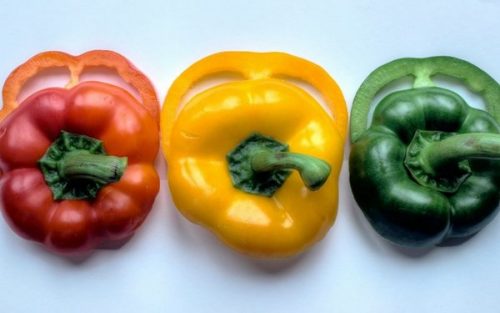

The cockatoo was created by the Gavrish company, and is presented in two types: red and yellow. They do not differ from each other in taste and agricultural technology.
This variety is grown in much the same way as other sweet peppers. First, the seeds are sown, and then the seedlings are placed in the greenhouse and provide it with the necessary conditions.
Care
For optimal growth and development of peppers in the greenhouse, it is necessary to carry out in a timely manner:
- mulching;
- airing;
- watering;
- formation;
- top dressing;
- garters to supports;
- examinations to identify pests and pathogens.
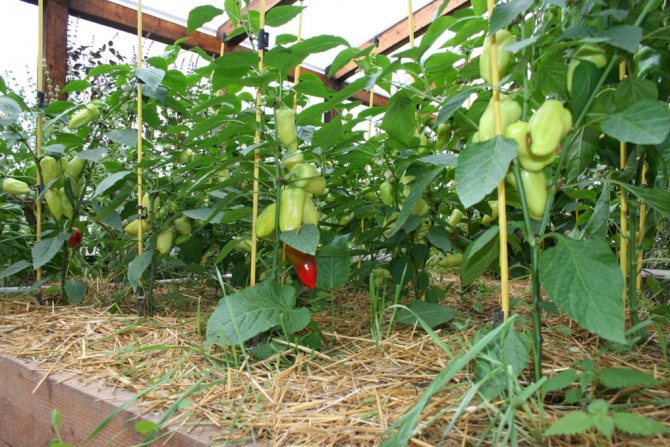

Reading the description of the Kakadu pepper variety, you need to understand that if the length of the pepper fruit is 20-25 cm, then the lower fruits may touch the ground. This is often what happens. To prevent this from happening, it is necessary to carry out mulching.
It is necessary to mulch the soil near the trunk and around the circumference with artificial or natural material, but always clean, not contaminated with pathogenic microflora. If this material was used for nightshade mulch before, then it is treated by spraying with a solution of copper sulfate.
When growing peppers in a greenhouse, you should constantly monitor the temperature indicators. As soon as the thermometer reaches the 29 ᵒC mark, thorough ventilation should be carried out. Sometimes, with strong heat, it is not enough to open the vents, so experienced vegetable growers raise the film sides.
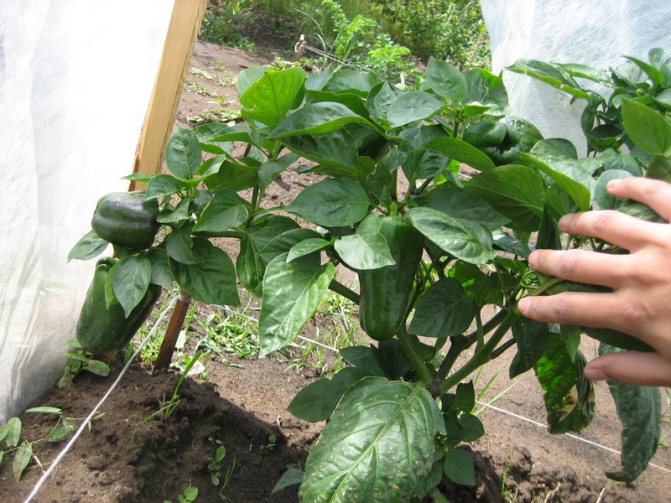

The Kakadu pepper requires careful shaping and tying. When the central shoot rises to 30 cm, it must be attached. It is this height that will allow the first fruits not to lie on the ground.
Being a wide enough bush, it is necessary to constantly lighten its middle from the shoots. To do this, it is enough to pinch each shoot that still wants to grow in the direction of the center of the bush.
Top dressing
Kakadu produces a lot of fruits, however, in order for them to mature and increase the marketable weight to 200 g, timely feeding is necessary.
The first one should be made with nitrogen and carried out 2-3 weeks after disembarking in a greenhouse. To prepare the nutrient solution in a bucket of water, dissolve 2 tbsp. tablespoons of ammonium nitrate or urea in a bucket of water and poured under a bush in a half liter jar.
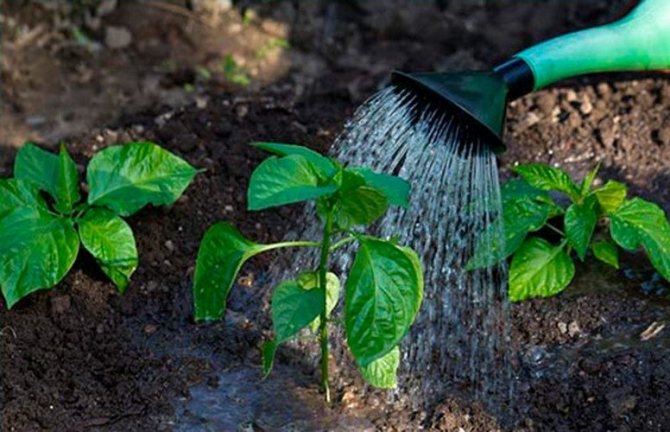

How to grow seedlings?
Branded Kakadu seeds do not need to be processed additionally, since the Gavrish agricultural company heats the planting material, pickles it from diseases and insects. Sowing is done in the second half of February.
It must be borne in mind that the sprouts may not have enough light, therefore it is advisable to place phytolamps in the shelter.
The land for planting seedlings should be loose, nutritious. It is best to treat it with phytosporin and other disinfectants. The soil can also be disinfected by calcining and watering with soil fertilizers.
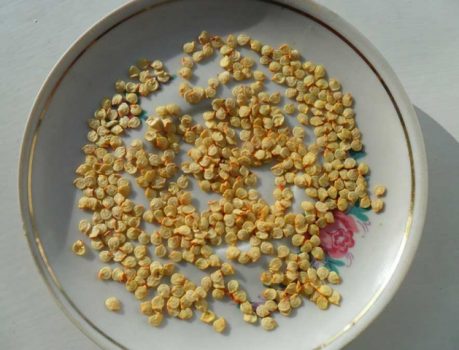

After preparing the substrate, the seeds are planted in boxes and kept in this form, preventing drying out, maintaining the temperature at least + 20. Then the sprouts will appear in 7 days. Then the air is cooled to 18 degrees, adding light using phytolamps. The required length of the day is 14 hours.
Seedlings are watered every morning with heated, settled water. If rotted humus and humato are added to the soil, top dressing is not needed. Otherwise, the soil must be treated with an organo-mineral fertilizer for pepper or vegetable seedlings.
In order for the seedlings to develop proportionally, from time to time they are turned towards a light source.
When 6 or more leaves are formed on the sprouts, the pepper can be planted in an open space. Before this, hardening is carried out, in the air or with an open window.
Advantages and disadvantages
The cockatoo hybrid pepper has inherent advantages that attract the attention of many gardeners, both experienced and beginners, to it. These are such qualities as:
- good seed germination;
- the original shape of the fruit;
- their excellent taste and juiciness;
- large-fruited;
- high productivity;
- long-term fruiting.
Disadvantages of hybrid Kakadu pepper:
- high cost of seeds;
- unsuitability for growing in open beds;
- intolerance to cold snaps;
- exactingness to care;
- the tendency to damage the fruit with apical rot at low humidity and high air temperatures.
Thus, Kakadu peppers are suitable only for greenhouse cultivation, which must be taken into account by those growers who want to plant this hybrid in their plots.
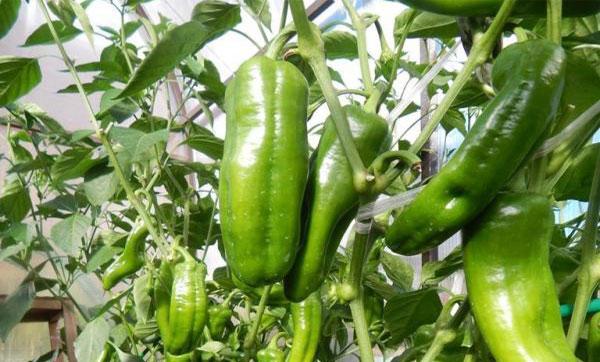

Landing in a garden or greenhouse
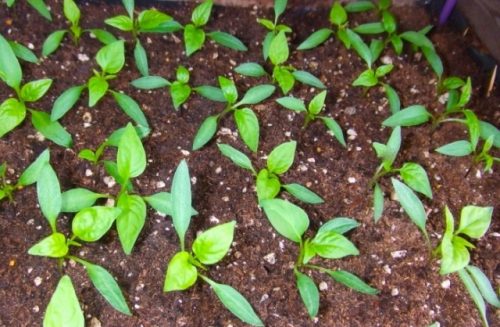

When can seedlings be placed in open soil? This is directly related to the climatic conditions of the area. In the south, landing is carried out in mid-late May, and in the central parts of Russia until mid-June.
The Kakadu variety is planted according to the standard scheme provided for large peppers.Plants should be at least 60 cm apart from each other, and rows should be from 1 meter. The best time for the procedure is early morning, evening or cloudy day when there is practically no sun.
Before lowering the seedlings into specially made holes, you need to provide them well with water. After planting, watering is repeated, and the earth is mulched with a dense layer of humus.
Planting peppers
Kakadu peppers are transferred to the greenhouse 2 months after seed germination. This seedling reaches 30 cm in height, has a sturdy stem and about 12 leaves. In a greenhouse, the soil should warm up to 15 degrees, which usually happens in May.
The preparation of the greenhouse and soil begins in the fall. The soil is dug up and fertilized with organic matter. When re-digging in the spring, add 50 g of fertilizers with potassium and phosphorus and 35 g of ammonium nitrate per 1 sq. m.
No planting is performed after tomatoes, potatoes, eggplants and any peppers. Rotating crops avoids soil depletion and the spread of disease.
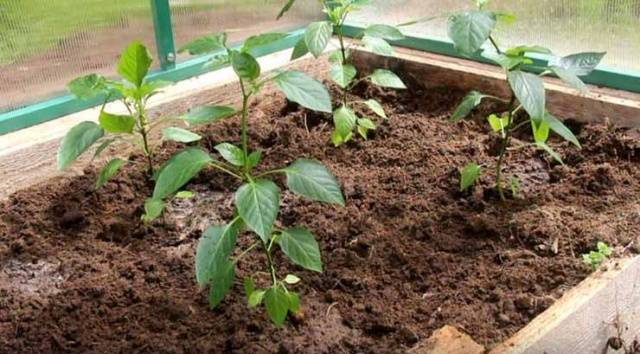

For the peppers, prepare holes 12 cm deep. Leave 40 cm between the plants.If several rows are organized, leave 80 cm. It is most convenient to place the plants in a checkerboard pattern to avoid thickening and facilitate planting maintenance.
Kakadu peppers are transferred along with an earthen clod into prepared holes. The soil under the plants is compacted and mulched with peat.
How to care for pepper in summer?
The Kakadu variety is a rather capricious vegetable crop that needs timely watering and feeding. The supply of moisture to the plant should be done once a week, but in a very abundant amount. This requires warm water, with a temperature of + 18. Once every 14 days, additional fertilizing is added to watering:
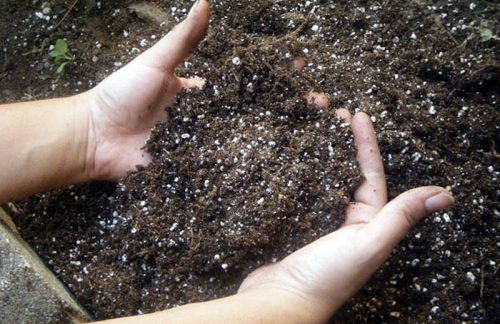

- within a month after disembarkation - chicken manure with ammonium nitrate;
- after the beginning of flowering - the same mixture with the addition of potassium salt and phosphorus;
- during fruit formation - fertilizer with a high phosphorus content, but without ammonium nitrate
But compliance with all the rules for watering and feeding is not a guarantee of a good harvest. The bush of the plant must be properly formed, for which it is necessary to regularly remove the lateral shoots and branches growing from the lower ovaries. Poured fruits are best removed technically ripe, with a light green color and glossy skin.
Features of growing varieties
When growing Kakadu pepper, you should take into account some peculiarities.
It may be interesting Why pimples appear on pepper leaves: how to treat, prevention The main differences between bitter pepper seedlings and sweet ones Cucumber variety Goosebump f1: description and characteristics, reviews
Growing seedlings
A variety of medium ripening. Its technical ripeness occurs 130 days after full germination. Therefore, it is impossible to delay the sowing of seeds. The best time is the beginning of March, but only on condition that the seeds are preheated and soaked.
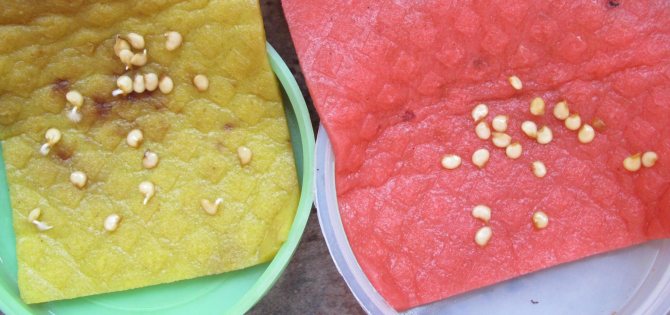

To do such an event, it is enough to wrap the seed in a cloth and moisten it with warm water. Wrapping it in a bag and putting it in a warm place for 2-3 days, you can accelerate germination by 12-14 days, which will allow you to get a harvest earlier.
Diseases and pests
With all the rules of agricultural technology, Kakadu pepper is not very susceptible to infection, but at an unfavorable time it is dangerous for it:
- Phytophthora. It usually develops on plants planted very close to each other. The disease does not affect crops that are watered regularly, but not in excess, and located in a ventilated area. If the seedlings are affected, wet rot appears at the base of the stem, the leaves turn yellow and fall off. On adult plants, brown spots are formed that grow right before our eyes. In dry air, the leaves dry and curl, and in high humidity they become covered with dark oblong marks. Having arisen on the leaves, late blight quickly spreads to the stems and fruits, from which the latter rot.
To avoid this problem, with the onset of wet cold weather, the culture must be treated with a Bordeaux mixture every 10 days. If signs of the disease have already appeared, you will need Barrier and Phytodoctor drugs.
- Another attack is summit rot. Formed on the sides of the fruit. At first it looks like watery patches, which then turn into dark, long, dry spots. The tissue loses color and wrinkles, the affected area becomes concave. Peppers affected by this disease ripen ahead of time and can pick up another disease - Alternaria. The reasons for the appearance of apical rot: lack of calcium, sudden changes in humidity, excess nitrogen fertilizers, damage to roots during soil cultivation. Fungi can settle on the surface of defective peppers. Peppers are very susceptible to disease within 30 days of fruit emergence.
To combat top rot, copper sulfate is used, which is sprinkled not only on plants, but also on the soil under them, and the surface of the greenhouse from the inside.
Now a little about the "uninvited guests" who can settle on the Kakadu pepper. These include:
- Spider mite. It is extremely difficult to consider the pest itself. The arachnid pierces the leaves of the culture, due to which brown dots are formed, and then the tissue darkens. When the tick moves along the plant, it becomes covered with cobwebs. Its tightly braided areas dry out.
The pest is active at air temperatures above + 25. It does not like moisture, therefore it attacks plants during drought. Protected ground is favorable for the development of the tick, therefore it often lives in greenhouses.
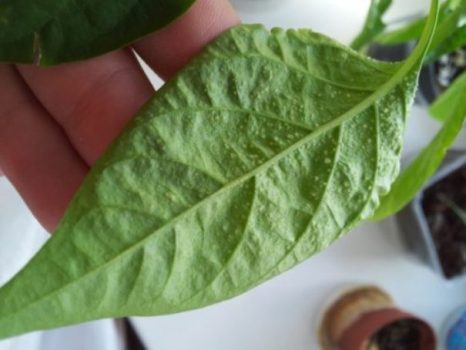

- Aphid. It feeds on vegetable juice. When this insect appears, the pepper leaves curl and dry out, a syrup-like pad forms on the surface of the plant parts, the bush becomes sticky and shiny, and pests crawl from the inside of the leaves. Aphids can penetrate the greenhouse during airing, with soil or young cuttings.
To avoid an insect invasion, you can plant onions or garlic around the perimeter of the greenhouse, the smell of which scares off aphids. Working tools in the greenhouse must be treated with bleach, especially during transplanting.
Gardeners can cope with spider mites and aphids with the help of Karbofos and Atellik. For the same purpose, spraying with ash liquor is used.
Your personal gardening consultant!
Every amateur vegetable grower has his own list of peppers he trusts. The list contains those options that gave a good harvest, did not get sick and, naturally, distinguished themselves by high taste. It is reliable to grow such varieties, because, based on your own experience, you are guaranteed to get a decent harvest. Nevertheless, every new year, any summer resident selects for cultivation several new varieties "for trial". Often the choice falls on varieties with some unusual, distinctive features. It can be the color or shape of the fruit, or it can be both taken together, and even in combination with the size of the peppers. And sometimes a special size, which the F1 Cockatoo pepper can boast of, reviews of which and a description of the basic rules of cultivation are discussed in this review.
Seeds of sweet pepper "Kakadu" can be bought in agro packaging. It is worth noting that this planting material is more expensive than conventional peppers.
Pepper Cockatoo: a description from breeders
- Medium ripening hybrid variety. The period from the emergence of friendly seedlings to the start of fruiting is 130 - 135 days. - Pepper bushes are tall, they can reach 150 cm, they are spreading and well leafy. - The variety is designed for cultivation in glazed or film greenhouses, it is also possible in polycarbonate greenhouses. - The shape of the fruit is elongated, cylindrical. The peppers are drooping, slightly curved. A distinctive feature of the variety is the length of the fruit, which can reach 30 cm.- Thick-walled pepper (thickness 0.6 - 0.8 cm). The weight of one peppercorn can reach 500 g. Taste, aroma and juiciness are excellent. - Appointment salad, can be used for pickling and other preservation. - The yield is about 2.5 - 3 kg per bush.
The hybrid probably got its name due to the similarity of the shape of the fruit with the beak of a cockatoo parrot. The color of the peppers at the stage of full ripeness is bright red. Agro has not only the red-fruited Cockatoo, but also a variation with the yellow color of the peppers. Cockatoo Yellow differs not only in the color of the fruit, but also in their shape - it is elongated, cylindrical. The peppers are quite large (they can weigh up to 300 - 400 g), drooping, up to 14 cm long. The bushes, like those of the Red Cockatoo, are tall, and the variety is intended for greenhouse cultivation. In principle, it is possible to plant red and yellow-fruited varieties together for color diversity, especially since the manufacturer promises a special deliciousness of peppers.
Pepper Cockatoo: description of cultivation techniques
The Kakadu hybrid is grown in seedlings. Seeds are sown at the end of February in prepared soil, which should be fertilized, moistened and loosened. A prerequisite for growing large-fruited varieties is the timely application of fertilizers and dressings. For these purposes, special preparations and complex formulations are used, which can be bought at any store. Peppers do not like chlorine fertilizers, so you need to carefully read the composition of the fertilizer on the label.
The Kakadu variety is intended for cultivation in closed conditions, that is, in greenhouses of any kind. Usually tall varieties and hybrids of pepper are grown in them, Kakadu refers to just such, the height of the stem reaches 150 cm - 170 cm.In greenhouse conditions, the growing season is slightly reduced, which should be taken into account when sowing seeds for seedlings. Peppers are planted shallowly according to the planting scheme: the distance between the bushes is at least 80 cm, between the rows at least 40 cm. It is necessary to provide trellises for tying. The bushes require formation: first, 3 shoots are left, and after two weeks the weakest is removed, the remaining ones are tied together with a rope "figure eight". Further care for the bushes of peppers consists in removing underdeveloped and deformed ovaries on fruiting shoots, and the lower dying leaves are also constantly removed.
During the growth period, great attention should be paid to the microclimate in the greenhouse. The air temperature on sunny days should not be higher than 25 - 26 ° С, and on cloudy days - 20 - 22 ° С. The night temperature should not drop below 17 - 19 ° C. So that the Kakadu fruits do not deform, and the bushes develop correctly, it is also necessary to control the humidity regime. For the soil, maintain within 70 - 80%, and during the ripening period - 80 - 90%. Air humidity should be within 65 - 75%. If there is not enough moisture, then the peppers can be affected by apical rot. The greenhouse must be regularly ventilated.
Read also: Ground black pepper - benefits and harms to the body
Pepper Cockatoo F1: reviews of vegetable growers
Reviews about this variety are different and sometimes rather contradictory. Gardeners who tried to grow this pepper were divided into two camps: some have positive ratings, while others are not entirely satisfied with the results. Dissatisfied summer residents note that, despite the increased cost of seeds, the pepper did not grow large. And of the characteristics declared by the manufacturer, only the height of the bushes corresponds to the truth. Some say that the fruits grow in the stated size, but in the amount of one or two per bush.
Unsuccessful experiments in growing Cockatoo can have various explanations. Firstly, not controlling and not observing the microclimate in the greenhouse, as a result of which all the forces of the plants go to the growth and development of the bush, and not to the setting of fruits.Also, many do not carry out additional fertilizing with fertilizers, which affects the size of the fruits. Secondly, when buying seeds, you must definitely control the shelf life and storage conditions. Planting stock purchased on the street or at questionable points of sale is likely to be unusable or spoiled.
On the other hand, vegetable growers who have positive experience in cultivating the variety note that it turns out to grow large fruits, the only thing is that the thickness of the flesh is slightly less - about 0.5 - 0.6 cm. But the taste is really at its best. Many housewives consider Kakadu to be an excellent pepper for making lecho and preservation.
Share useful information:
How to store peppers in winter?
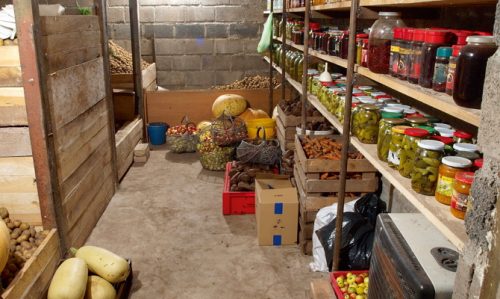

The Kakadu variety is widely used in canning, frozen and kept fresh. When freezing, you can use the following tips:
- The pepper is left whole for stuffing or cut into cubes.
- It is necessary to freeze fruits quickly, regardless of the form of storage.
- Before placing in the freezer, you need to cut the stem, remove the seeds, wash and dry the peppers thoroughly.
- Separate bags are used for storage so that the smell of other food does not attach to the vegetable.
- Peppers can be stuffed first and then frozen. Thus, it retains nutrients longer and takes less time to cook.
Thawed fruits are added to side dishes, salads, sauces and soups.
A vegetable is a dietary product, its energy value is only 26-30 calories.
Harvesting and assigning the harvest Cockatoo
It is recommended to harvest peppers in technical ripeness, then the yield will be higher. This is especially true for the first fruits, do not let them blush on the bush, they greatly inhibit the development of ovaries located higher on the stem and appearing later. The Kakadu hybrid has a versatile purpose... Peppers are tasty both in technical and biological ripeness, suitable for preparing hot and cold dishes. For stuffing, long curved fruits are too big and inconvenient, it is better to use them chopped for soups, salads, snacks, sauces, lecho. The easiest way to prepare Cockatoo for the winter, keeping almost all vitamins, is to freeze it.
Video: Kakadu pepper and other vegetables, frozen for the winter
How is the variety useful?
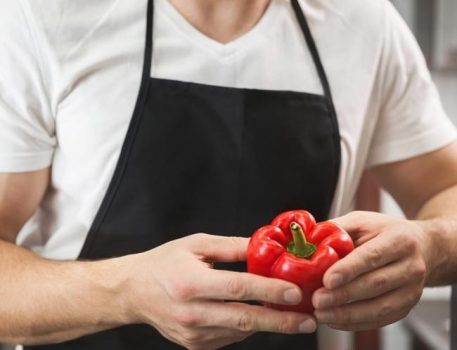

Cockatoo, like any other sweet pepper, contains many vitamins and minerals, and is rich in fiber.
Iron is an important component of pepper, so it is recommended to be consumed by people with anemia. It will not harm those who want to lose weight, since fiber stimulates metabolic processes.
The variety is useful for decreased immunity, weak nails and hair, memory problems, low brain activity, vitamin deficiency.
For people with cardiovascular diseases, the vegetable is a good source of potassium.
Red Cockatoo is an aid in visually impaired because it contains more vitamin A than carrots. Such fruits inhibit the growth of cancer cells, therefore they are useful in oncology.
Cosmetologists advise using pepper juice to moisturize the skin, and the gruel from it as a nourishing face mask.
Pepper Cockatoo: reviews, photos
Pepper Cockatoo is also a source of vitamins and nutrients. Folic acid, vitamins C, A and B - all this is in this culture. As for the reviews regarding the vegetable, gardeners note the following key aspects:
- the variety needs pinching;
- suitable for all types of cooking;
- it has excellent seed germination;
- high characteristics of transportability;
- Kakadu pepper is adapted to different climatic conditions and soil;
- record indicators of productivity, early maturity.
Those who have already planted Cockatoo in a greenhouse or outdoors have noted a number of benefits. In most cases, summer residents were satisfied, so they recommend that you read the description, video, and plant it for everyone who loves bell peppers.
Find out: When to plant peppers for seedlings? Undoubtedly, Kakadu pepper, the characteristics and description of the variety are of interest to many farmers, summer residents and gardeners. After all, not everyone can boast of giant fruits in their garden. One has only to look at the photo, and Kakadu impresses with its size. The taste of the vegetable is also so pleasant that it makes it possible to create luxurious culinary masterpieces and preparations for the winter. Why not buy Kakadu pepper seeds by planting them in your backyard ?! Continue reading on tyfermer.
Video about Kakadu pepper with characteristics and description of the variety:
(4 ratings, average: 4.75 out of 5) Loading ...
«Previous post
Gardeners reviews
Ivan, 32 years old, Tchaikovsky We plant peppers on the site every year. We chose F1 Kakadu pepper according to reviews, photos and descriptions, we have been planting it for the third year already. These seeds sprout quickly, the plants are unpretentious and yield crops even with minimal maintenance. In a greenhouse, the cultivar reaches 1 m in height. Spreading bushes, they have many elongated fruits. The fruits themselves are thick-walled and juicy, can be stored for a long time. We remove the harvest until late autumn. When the bushes were removed in September, they were still in bloom.
Oksana, 46 years old, Vologda This year they chose according to the description, reviews, photo pepper Cockatoo F1. Only 6 bushes grew out of 10 seeds. There were no more than 6-8 fruits on each plant. The largest specimen has reached 200 g. The variety has an unusual shape, which resembles the beak of a tropical bird. The variety tasted average. They used it to prepare lecho for the winter. The variety was not remembered by anything special. I am not going to re-grow it, fruiting comes late, and the taste is very mediocre.
Daria, 48 years old, Yekaterinburg I have been growing Pepper Cockatoo for several years. The variety is liked for its large and juicy fruits. Be sure to pinch the seedlings when 5 leaves appear. So the lateral shoots begin to develop, which will ripen the fruits. When the first fruits appeared, at first I thought that I was mistaken and grew bitter pepper. However, they turned out to be very sweet to taste. The variety tolerates cold snaps and drafts well in the Urals, has never been sick. I harvest in a greenhouse until October. Pepper Kakadu is added to soups, salads and lecho.
How to grow cockatoo correctly?
The method of growing the Kakadu variety is seedling. Planting seeds in the ground is optimal at the end of February. The composition of additional dressings should not contain chlorine. Greenhouse conditions for growing a plant can shorten the growing season. Planting scheme: 80 * 40 cm.Prepare trellises for tying in advance.
When forming three shoots, you should wait 2 weeks, then remove the weakest one, and it is recommended to tie the remaining ones with a "figure eight" with a rope. It is important to remove underdeveloped ovaries in time. On sunny days, plants need to provide a microclimate: the temperature is not higher than 25-26 degrees, appropriate watering. On cloudy days, the optimum temperature is 20-22 degrees.

